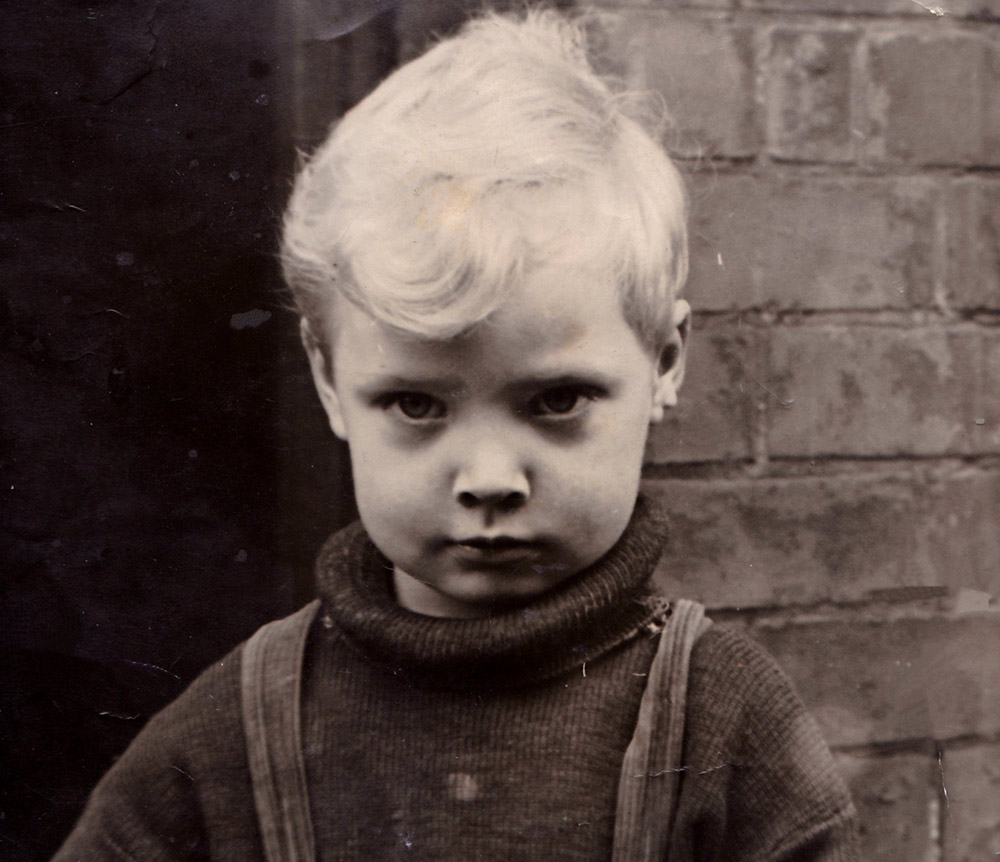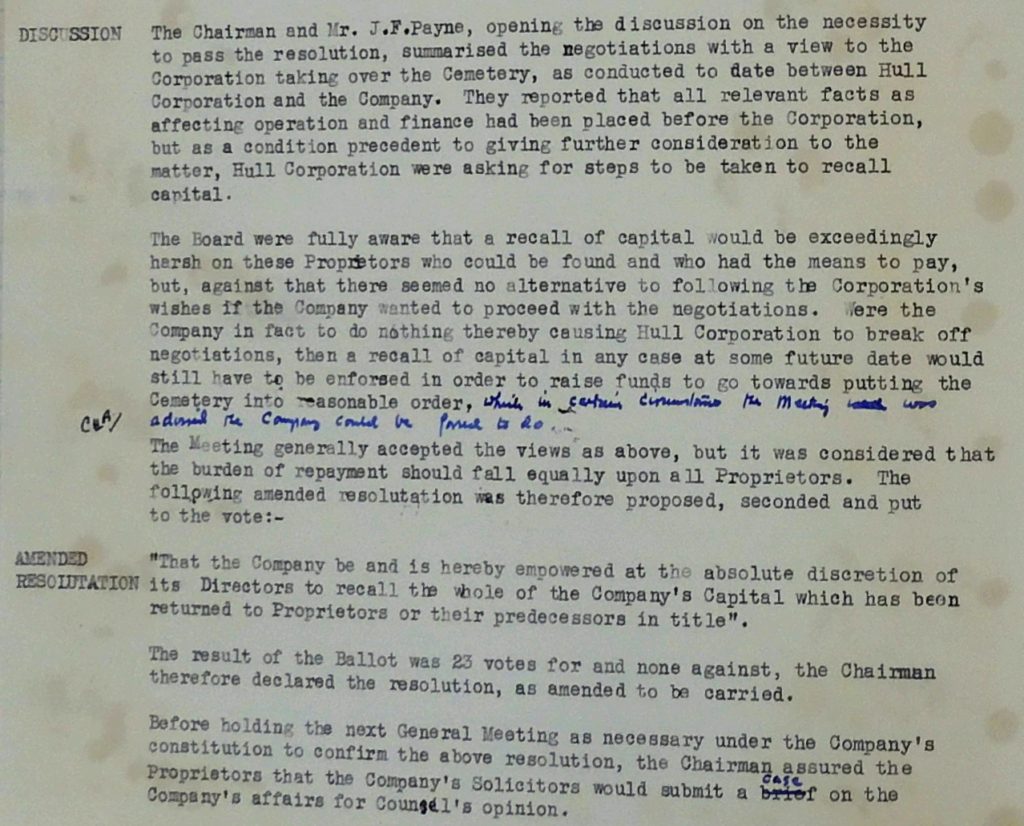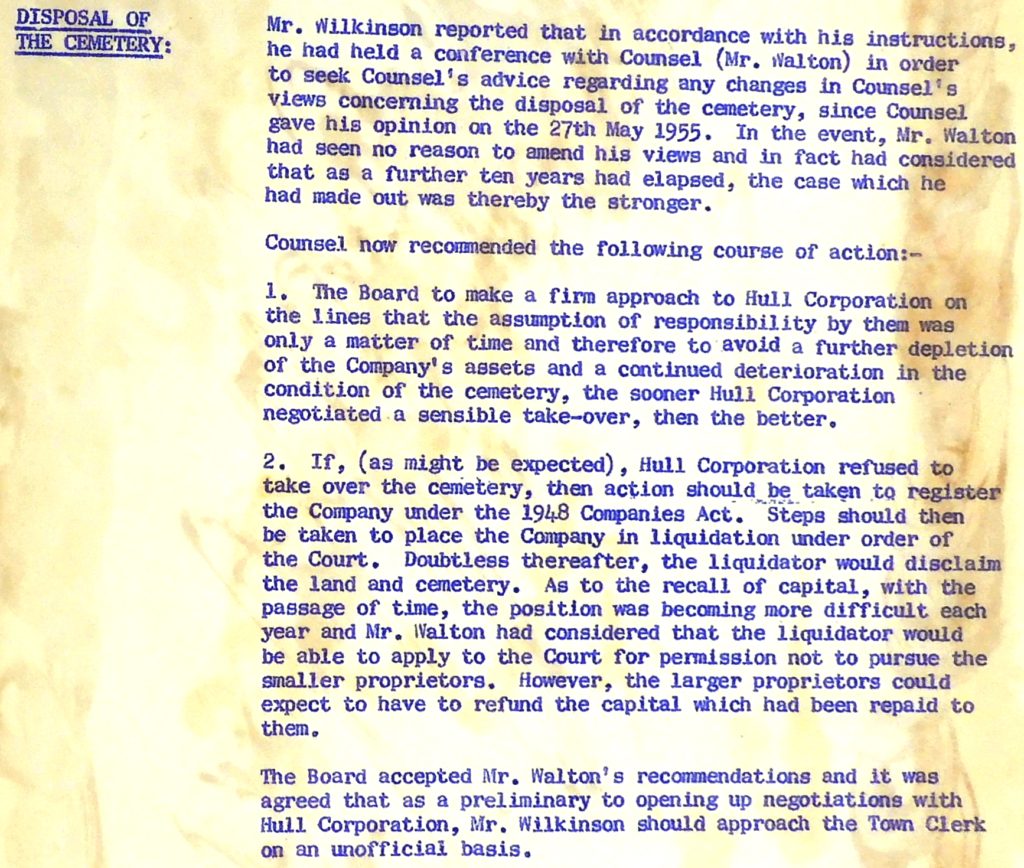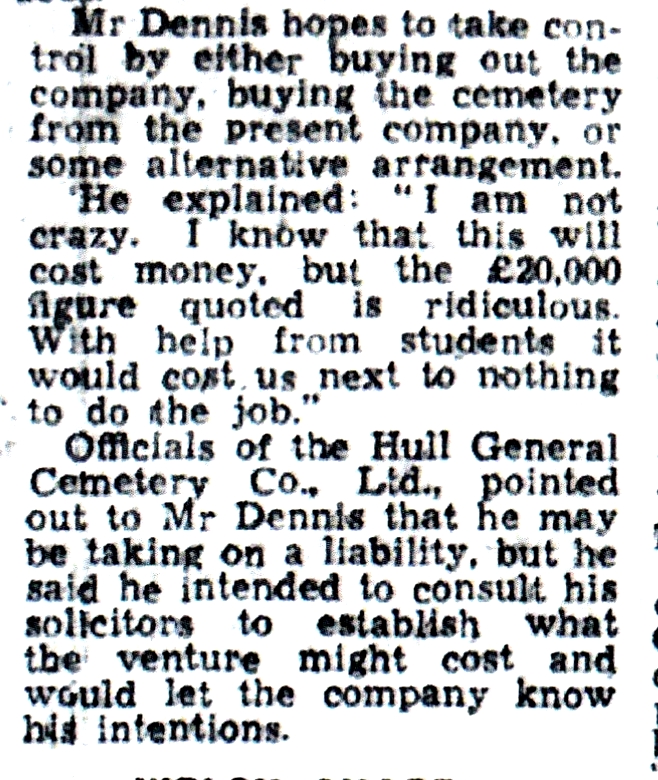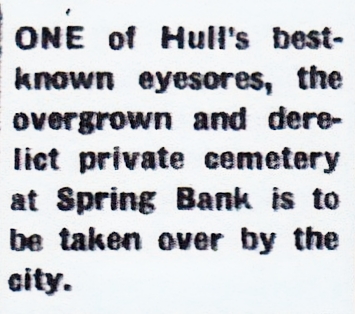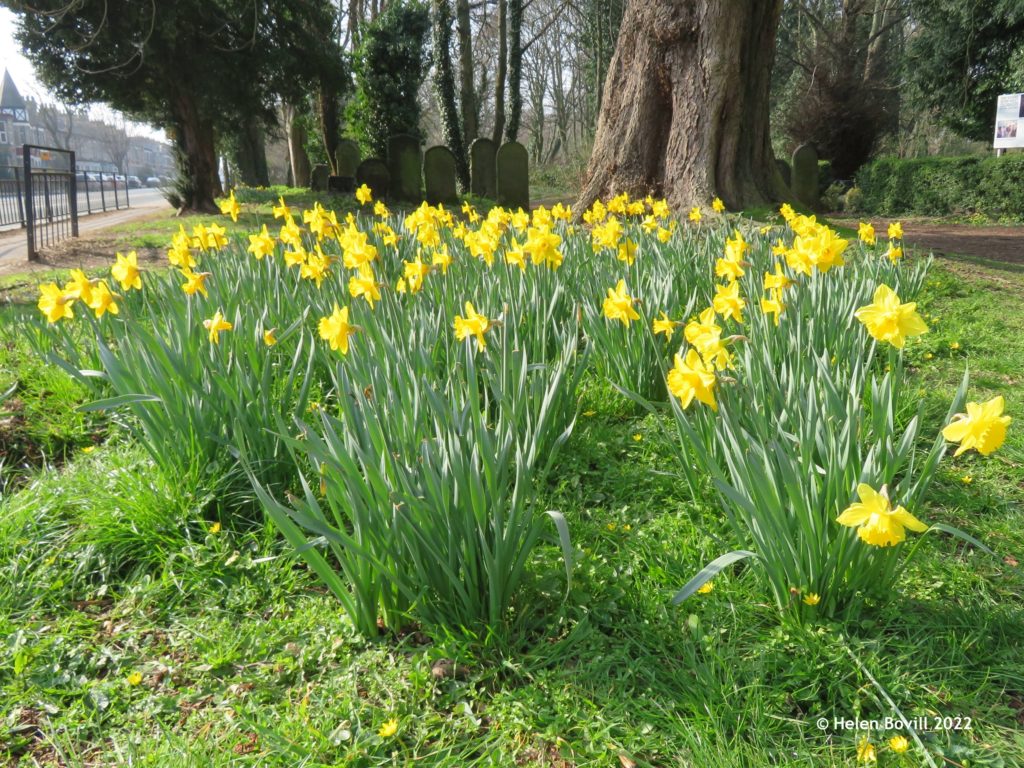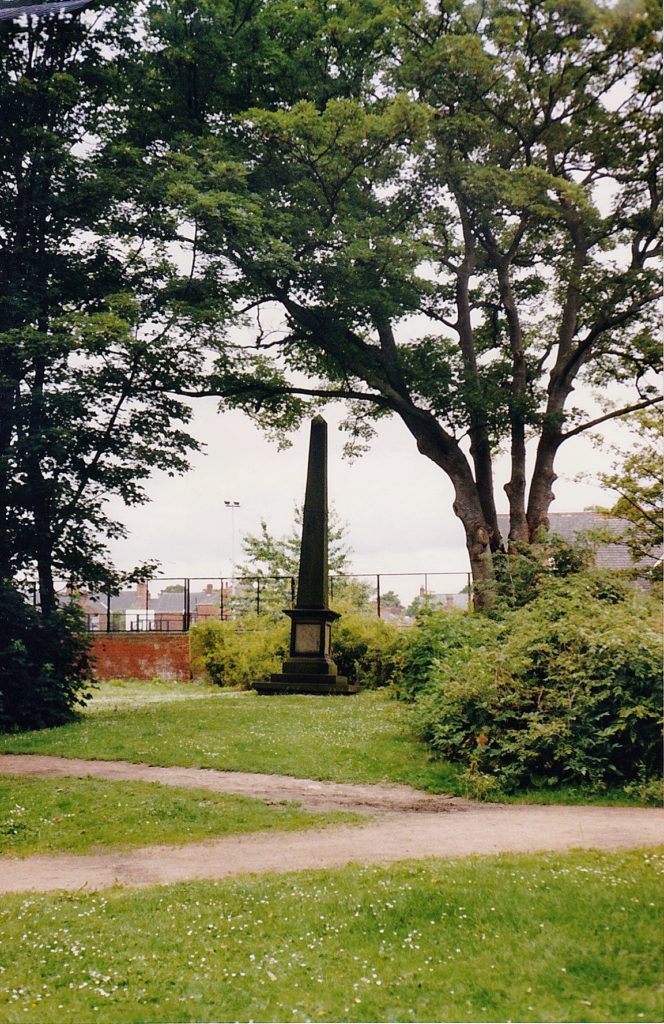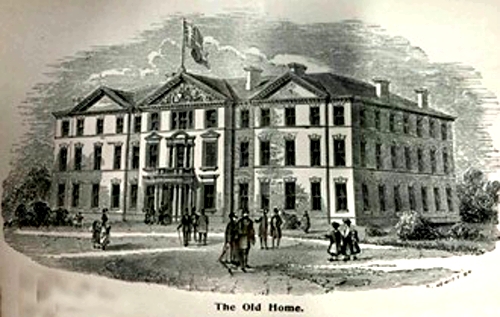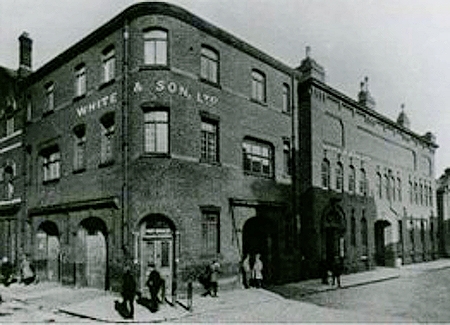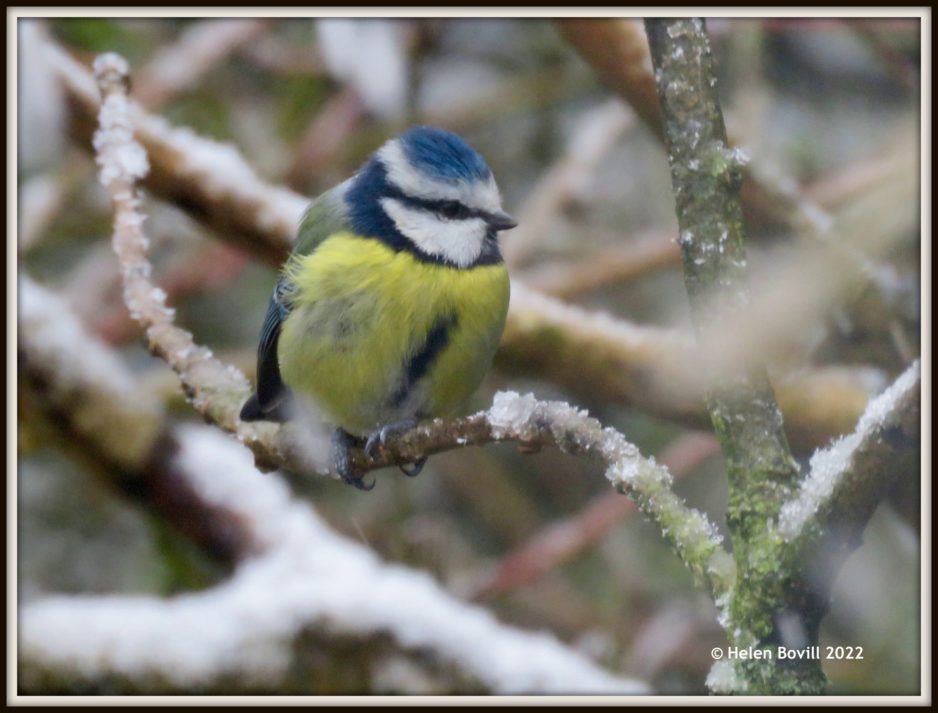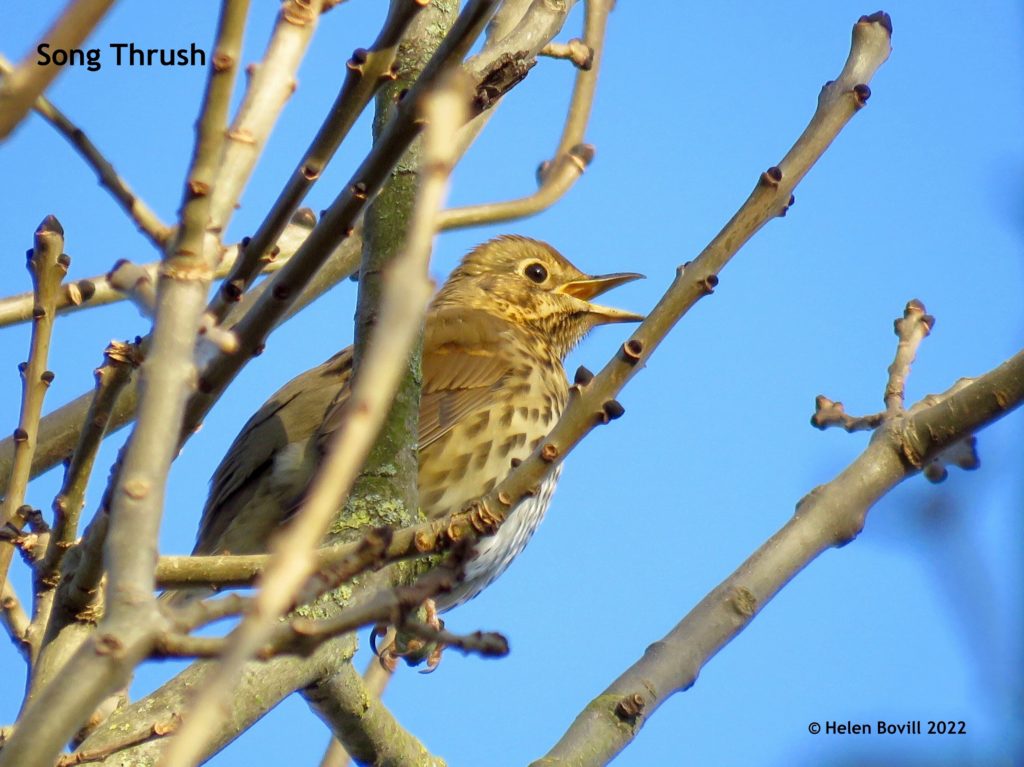This is an article that Bill Longbone produced some years ago for the Facebook site. In it he listed a number of women who were independent minded, resourceful and also influential. They also had a connection to Hull General Cemetery.
Bill called the article ‘Inspirational Women’ and the title fundamentally says it all. With one or two changes here it is once again for your pleasure.
Eleanor Rollit

Eleanor Rollit (Bailey) was born in Hull in 1853, the 2nd daughter of ship builder, William Bailey and Mary Badger Ainley. William was a self made man, and a partner in the steamship company, Bailey & Leetham, which was taken over by Thomas Wilson & Co. in 1903. William was a JP, and a director of the Hull Dock Company and lived at White Hall, Winestead.
Eleanor married Albert Kaye Rollit at the newly opened, St Peter’s Church, Anlaby on 26th August 1872 when she was just 18 years old. Her brother, Walter Samuel Bailey, of The Mansion, Anlaby, married Albert’s sister, Ellen Rollit.
Albert Kaye Rollit, was the son of solicitor John Rollit, and brother of Arthur, also a renowned solicitor who lived at Browsholme, Cottingham. Albert became a successful eventually became President of the Law Society, and was later knighted.
Eleanor’s charitable work
In 1874 their only daughter, Ellen Kaye was born, and the family lived at Thwaite House in Cottingham. Eleanor was very involved with local charities, and was a great supporter and benefactor of the Sailor’s Orphanage on Spring Bank, she was also a patron of the training ship T.S. Southampton, that trained wayward boys and orphans in the basics of seamanship, and was moored in the Humber at the mouth of the River Hull. Eleanor personally opened bank accounts with the Hull Savings Bank for the boys.
Eleanor was always referred to as charitable and philanthropic, she organized annual visits and fetes at the family house in Thwaite Street, for the children of the orphanage, and subscribed towards a new wing at the Hull Royal Hospital in Prospect Street.
Lady Mayoress
When her husband became Mayor of Hull in 1883-1885, Eleanor became Lady Mayoress and extended her support for local charities and good causes. She was also very active in the early women’s suffrage movement. Sadly, during her tenure of Lady Mayoress, she suffered heart problems, and died on 11 January 1885, aged only 31.
Her funeral was attended by ex-mayors, councillors and many of the local dignitaries. The cortege, which left from the family house in Cottingham, was lined all the way to Hull General Cemetery, with crowds of in excess of 20,000 people, including the orphans of the Sailor’s Orphan Homes. Her portrait was painted by Ernest Gustave Giradot and hangs in The Guildhall, a marble bust by local sculptor William Day Keyworth junior is also in the Guildhall.

In1892, her husband, Sir Albert Rollit, put a private members bill supporting votes for women, no doubt inspired by his wife’s work.
She was buried in the family grave, which includes her father in law, John Rollit and some of his children. Her headstone still remains in HGC, but the top section with her epitaph has been removed, and is in need of some repair work, (see photo below).

‘The Friends’ are looking at a proposal to carry out restoration work to the headstone.

Her husband, Albert, moved to London and remarried the controversial and twice married, Mary Caroline Michell, Dowager of Sutherland in 1896, he died in 1922, his cremated remains are in the family grave in Hull General Cemetery.
Thwaite House, was later purchased by the University of Hull, the gardens were used by the Botany Department the house became Halls of Residence called Thwaite Hall. The house and grounds are currently being sold by the University.
Mary Sharrah
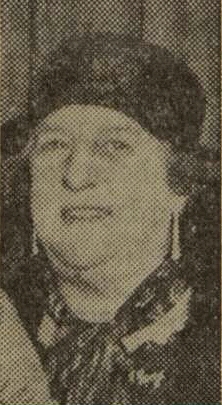
Mary Alice Sharrah was born in Hull in1863, the daughter of William Simpson Sharrah, a prominent Wesleyan, who was The Seaman’s Missionary for the Port of Hull, and his wife Mary Ann. She taught music from an early age, setting up the Hull School of Music (The first school of music in England), in 1887, originally from her family home at 22 Reed Street, and later at 55 Spring Bank.
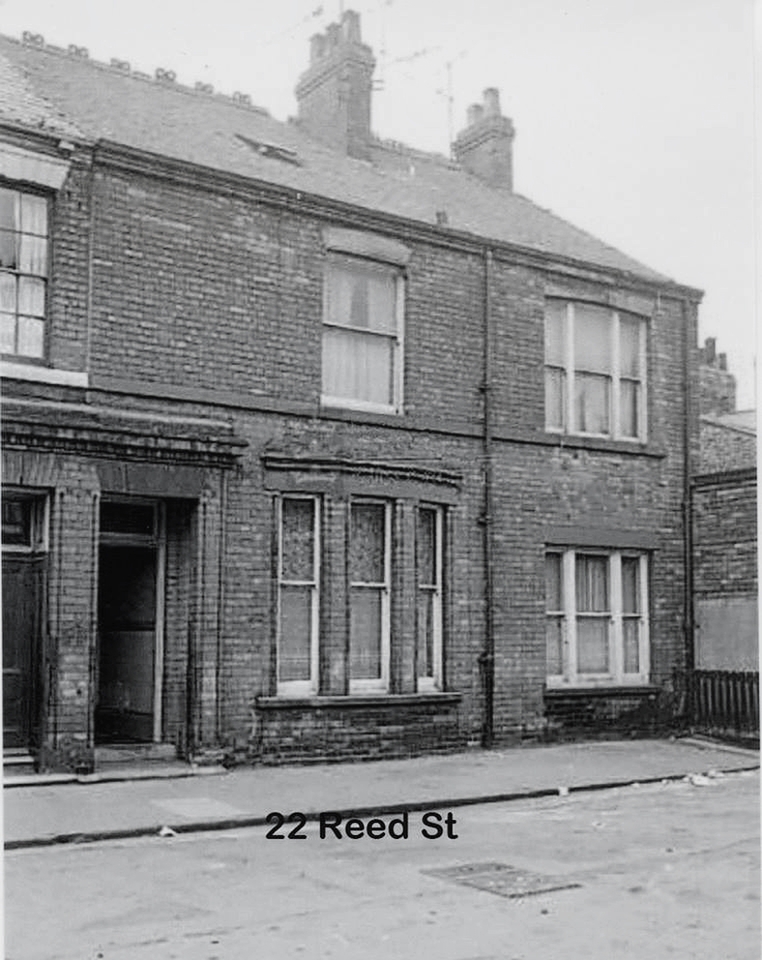
In 1894 she married William Henry Simpson, a director of a local grain merchant’s, and lived at their large house at 55 Spring Bank, which still exists. For teaching purposes she kept her maiden name of Sharrah, and referred to herself as ‘Madame Sharrah’. As well as music, she also taught drama and elocution, instructing many local talents such as Annie Croft, her son David Croft of Dad’s Army etc, Doris White and many others.

Charitable work
Madame Sharrah supported many charitable institutions with her shows and concerts, including The Mother Humber Fund, Newland Orphan Homes and the Hesslewood Orphanage. Throughout WW1 Alice was responsible for organizing many concerts in aid of servicemen.
Her daughter, Phyllis Sharrah continued the school after her mother’s death on 25th May 1940, amalgamating with Sizer Simpson School. The premises became 55 Antiques in the 1960’s, next to The Silhouette Club, and is now part of a number of listed buildings in the Belgrave block.
The entire family of father, mother and Mary are all buried in Hull General Cemetery, but sadly the headstones have been removed.
Mary Kirk Mawmill
Mary Kirk Mawmill was born in Beverley on 7th October 1810, the daughter of William & Hannah Mawmill. She married Edward Robinson Harland in Hull on 11th August 1832. Edward had been indentured to be a greengrocer, but a year after his marriage he started his own printing business at 14 Carlisle Street, (a street later demolished to make way for Jameson Street).
They lived near the business premises in Carlisle Street, and had 5 children, employing 2 apprentices. Unfortunately, Edward died suddenly in 1844 aged only 33, leaving Mary with 5 young children and a business to run.
Single mother of five
Mary was unphased by this set-back, and continued to run the business and bring up her young children. Under her stewardship, the business grew from strength to strength. She was described in the Hull Daily Mail as ‘a woman of rare business qualities, succeeding in keeping the Company together in the midst of great difficulty’.
A further set back occurred to Mary when her daughter, Emma, died in 1855 aged 20.
However, the business continued to expand, and became involved in the printing of tickets, two of her sons, William and Edward also joined the company to assist in the running of the Company. However, William died in 1880 aged 38, the company name was recorded as M Harland & Son. The other son Thomas, died in New Zealand in 1907 aged 74, the remaining daughter, Sarah, died in 1910 aged 73.
Her death
Mary died of an apoplexy at her home at 104 Regent Street on 3rd November 1885 aged 75, and was buried in Hull General Cemetery. After her death Edward took over the company, and moved to larger premises, to what was known as Phoenix Works, in Land of Green Ginger, although the correct address was Manor Street.
The company became one of the largest printing companies in Hull, moving to Springfield Way, Anlaby in the 1960s, and innovating into data printing and bar code systems. I believe that the company was taken over by a multi-national printing company in the 1990s, and business transferred to Eastern Europe, but a management buy-out took place and the company still trade at their Marfleet premises on Hedon Road.
Sadly, Mary’s headstone no longer exists, and she is not recorded in the MI books. She certainly was a resourceful and inspirational woman.
Mary was also the great grandmother of Annie Croft, the well known Hull actress and singer, but that’s another story…….
Annie Croft
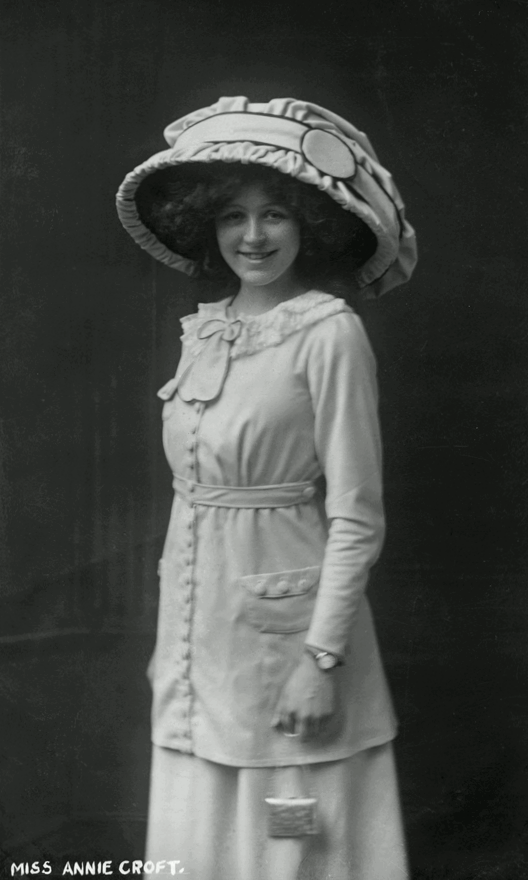
Many people will have heard of Annie Croft, the Hull girl who became an international star of stage and screen, but few will know of her fascinating story.
Although, not buried in HGC, she is very much associated with it, as her great grandmother, Mary Harland and the woman behind the success of Harland’s Printers is buried there.
Annie Croft was born Gertrude Mulgrave on 17th August 1892 at 11 Tuke’s Terrace, Walker Street, to Frederick Steele Mulgrave and his wife Lily Ann (Davis).
Adoption
She was adopted by Michael Croft (1853-1895) and his wife Emma, the daughter of Thomas Harland and the grand daughter of Mary Harland, who we have discussed previously. She was baptised as ‘Annie Harland Croft, the adopted daughter of Michael & Emma Croft of 424 Hessle Road at the Wesleyan Methodist Chapel at the corner of St George’s Road on 24th November 1892. Michael and Emma had a shop on the opposite corner of St George’s Road to the chapel.
Over the years there has been much unfounded rumour regarding the parentage of Annie Croft. The ‘story’ was that she was the illegitimate daughter of Muriel Wilson, the daughter of Arthur Wilson and Edward Prince of Wales, (later King Edward VII), after an affair whilst the future king was staying at Tranby Croft. Whilst it is true that Prince Edward regularly stayed at Tranby Croft, (he was there at the infamous ‘Baccarat Scandal’) it has been proven beyond doubt that Annie’s ‘royal parentage’ was just a rumour.
Sadly, Annie’s adopted father, Michael Croft, died in 1895 aged just 41, leaving Emma to bring her daughter up on her own, but with some financial help from her father Thomas Harland.
Emma remarried William Drury, (a sea pilot) in 1898 and lived at 32 Waverley Street. Apparently William was a brusque man who liked a drink. He died in 1914, when Annie was 20 years old.

Becoming an artist
Annie joined Madame Sharrah’s ‘Hull School of Music’ when a young girl. She quickly became known as a talented singer and dancer, appearing in many of Mme Sharrah’s concerts and shows. In 1907, when only 16 years old, Annie decided to form her own school of dancing and music, which she called the Waverley Academy of Music, operating initially at the family home in Waverley Street, later moving to 5 Fountain Street.

In addition to teaching dancing, acting and singing, Annie produced many concerts and plays at the local theatres. During WW1 she produced many shows supporting local charities and raising money for servicemen.
David Croft
Annie’s talents were well noted and she was offered parts in plays in London, and film roles. She married American stage and film star, Reginald Sharland (1886-1944), in Hull in 1914, and appeared in many plays with him. They later moved to Bournemouth. They had two children, Peter, (1917-1988), and David Sharland (1922-2011), both of whom trained at Madame Sharrah’s Hull School of Music and adopted the stage names Croft.
David Croft became famous as the writer of several BBC sitcoms, including, Dad’s Army, Are You Being Served?, Allo, Allo, It Ain’t Half Hot Mum, and Hi-De-Hi.
Annie divorced Reginald Sharland in 1931, and remarried Francis Gough in 1938.
Annie died in Dorset died on 23rd March 1959. She was aged 66.
Jane Wing
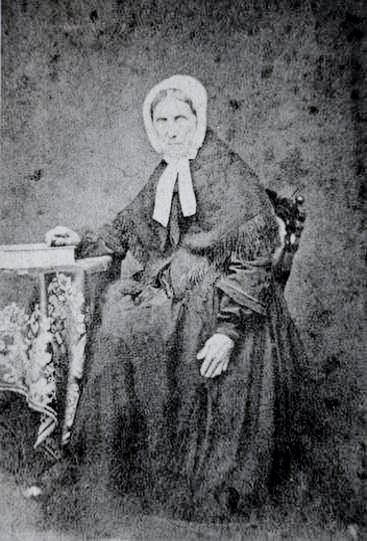
Jane (Barnborough) was born in Preston in 1778, and married John Wing at Holy Trinity Church, Hull on 21 Feb 1811. John was born in 1777 at Beeford, and had moved to Patrington some time before 1791, where he had set up a small post office and a mail coach service. The coach ran from Hull to Patrington twice a week, and although less than 20 miles distant, the journey took a minimum of 4 hours. This was at a time when the route to Holderness was via the turnpike road at Wyton Bar, Preston, Hedon and Thorngumbald.


Transport before the railway
The business was very successful. John & Jane moved their premises to North Bridge Foot. This was situated at the junction of Witham and Gt Union Street.
Jane and John had at least 7 children, Thomas, John, Jane, Robert, William, George (died in infancy), and David.
In 1826, John died suddenly, aged only 49, leaving Jane to bring up the family on her own. Jane took up the challenge, and managed to continue running the coaching business with the assistance of her son John. He also ran The Holderness New Inn on the corner of Witham and Dansom Lane. John also developed a further coach route to Hornsea.
Into the Charterhouse
In December 1844, aged 67, Jane successfully applied for entry into the Hull Charterhouse. This was probably with the assistance of her youngest son, David. For many years he was a Poor Relief Officer for South Myton District.
However, in 1858 further tragedy struck when John junior died aged 46. His elder brother, Thomas, who in 1848 was recorded as having the Carpenter’s Arms and livery stables in Gt Union Street, took over the running of the business and The Holderness New Inn. He gave it up though, probably because of construction of the Hull to Hornsea Railway in 1862.
Thomas, moved to the St Stephen’s area of Hull, where he became an inn-keeper and coach proprietor.
Jane’s only daughter, Jane, married Samuel Fisher who ran a druggist store at Wilton Terrace, Holderness Road, next door to the ship’s chandler, and Quaker, John Good. Another son, Robert was a clerk at a commercial druggist. A further son, William, emigrated to Australia.
Hull to Withernsea
Ten years after Jane entered the Charterhouse, on 27 June 1854, the Hull to Withernsea railway line opened, cutting the journey time from Hull to Patrington to about ½ hour. This must have greatly affected the business that Jane had developed. However, a coach service ran to Patrington for some time after.
Jane died in The Charterhouse on 23 October 1861 of ‘Decay of Nature’ aged 83, and is buried in HGC with several members of her daughter’s family, the Fisher’s. The headstone was sadly removed in the 1970s.
Julia Hammond
Julia Hammond was born 31st December 1859 in Wisbech. She was the youngest of 10 children born to labourer, Christopher Hammond and and his wife Martha (Canham).
In the late 1860s the family moved to Hull, and lived at 3 Fanny’s Terrace, Clarendon Street. Her father died in 1871 aged 51, leaving her mother, Martha, to raise the children. Martha married John Hare in 1874, but she died in 1885.
Marriage
On 28th March 1875, when Julia was still only 15, she married George Turpin at St. Andrews Church, Kirk Ella. She was illiterate at the time, and simply put her mark. She was also under the marrying age and incorrectly stated her age as 18. Both gave their addresses as Wold Carr, which was approximately where Parkfield Drive is now, and would have been in the Kirk Ella Parish.
George was born in 1858 at Oxmardyke, near Gilberdyke. He was the son of Mark Turpin and Hannah (Simms) of Cliffe, near Market Weighton. At the time of their marriage, George’s occupation was given as a labourer. He later became a plate layer on the railways, eventually becoming an engine driver. They had 15 children, only 10 of which survived childhood. In 1881 the family was living at Cliffe, later moving to 13, Filey Terrace, Gillett Street, and then to 11 Gillett Street.
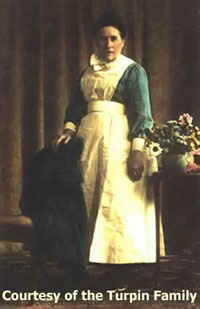
Training to be a midwife
Although having very little formal education, and being unable to read and write, Julia trained to become a midwife. This was at a time when only unmarried mothers and poor women actually gave birth in hospital. Prior to 1900, women in Hull were 6 times more likely to die from an infection in hospital, than at home. At that time, the majority of births in working class areas in Hull, were attended by a ‘local woman’, who would have experience of attending births, but would not be qualified.
Increasingly concerned about the infant mortality rate, the government introduced the Midwives Act in 1902. This meant that all midwives had to be qualified and registered. It took a couple of years to fully implement. Hull opened its first maternity ‘house’ at 569 Holderness Road, near Westminster Avenue, on 1st March 1905. In 1929, the old Sanatorium on Hedon Road, was converted into a Maternity home. However, there was a cost of £1 to enter the hospital, which not everyone could afford. Even as late as the 1920s, many women still employed the services of ‘a local woman’ when giving birth.
2500 babies delivered
Julia was one of only a handful of certified midwives in the Hull area. With her navy blue uniform, and riding her sit up and beg bicycle, complete with basket, she was a familiar figure in the Hessle Road area. She would have been on call 24 hours a day, 7 days a week. She went on to deliver over 2500 babies in the West Hull area.
Her husband, George died of an aneurysm at 17 Eastbourne Street 21st July 1929 aged 71.
Julia’s daughter Olive, and grand-daughter Sylvia, followed in her midwifery footsteps both serving in the Hessle Road area. Olive delivered about 3,600 ‘Hessle Roader’s’ before she retired in 1939, and daughter Sylvia delivered over 2000 babies until her retirement in 1958.
Julia died at 36 King Street, off Charles Street on 2nd May 1937 aged 77.
Both Julia and George are buried in Hull General Cemetery. The headstone no longer remains.
Jean Bartel

The story of the Hohenrein family of butchers and it’s tribulations during WW1 is well documented. Many of the family are buried in Hull General Cemetery, and are commemorated with an impressive marble monument.
The family originated in Mosbach, Baden- Wũrttemburg, near Heidelburg, Germany, Georg Frederick Hohenrein (1832-1902) emigrated to Hull in 1848, and established pork butchers shops in Waterworks Street and Princes Avenue.
This story relates to one of Georg’s great grand children, Jean Bartel, who, although not buried in Hull General Cemetery, has direct links to it.
Georg and his wife Katherina (Myer) had 6 children, 2 of which died in infancy. During WW1 the family suffered from anti German sentiment, and Charles Henry (1883-1974) changed the family name to Ross.
George William
Charles Henry’s brother, George William (always referred to as William) (1865-1933), married Julie Bierman. From this marriage they had a son, William born 1897, and a daughter, Else, born in Hull 3rd February 1898. Becoming increasingly concerned at the anti German sentiment during WW1, he emigrated to Germany with his family. However, as British subjects, George William. and his teenage son, William were immediately interred in the Ruhleben Internment Camp, near Berlin until the end of the war.

Moving to the USA
After the war, his daughter Else, married Alfred Leonhardt Bartelmeh, and in 1922, the family moved to America. They had a daughter, Jean who was born in Los Angeles 26th October 1923. Jean shortened her name to Jean Bartel. She later won the Miss America competition in 1943. Jean was the first college student to be crowned Miss America. She worked on Broadway as an actress/singer, and later worked in films and TV. Jean once claimed that “I was never beautiful, but I had vitality and looked healthy”. She married William Hogue but had no children. She died 6th March 2011 aged 87.
Sadly, her brother William, who became a doctor, was killed in an allied bomb attack in Germany in WW2.
Emma Hodge
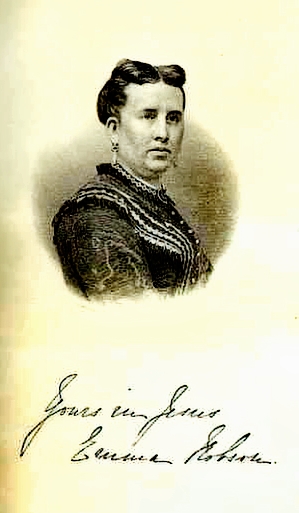
Emma Hodge was the eldest of the 6 children of Henry Hodge and his wife Jane (Simpson). She was born in Louth on 27th November 1837. Her father was working there, prior to his retuning to Hull to establish his own seed-crushing mill.
Primitive Methodist involvement
The family lived on Holderness Road, near Williamson Street. Emma became very involved with the Primitive Methodist movement through her father. He had donated large sums of money for the establishment of chapels in Hull. He was also a friend of William Clowes. Clowes was one of the co-founders of this religion.
She was an active member of the ‘Bright Street Chapel opposite the family home. This chapel was one which her father had laid the foundation stone. He had also donated substantial monies for its construction in 1863.
Emma married Joseph T Robson (1838-1897) at the William Clowes Chapel in Jarratt Street on 26th May 1859. Joseph was a manager at her father’s mill on Holderness Road. He was also an active member of the Primitive Methodist Church.
Emma, (referred to as Mrs JT Robson), and her husband, were well respected, and regularly preached at local chapels. She also became a councillor, a rare event in Victorian England.
They moved to a house in Hornsea Parade on Holderness Road. During their marriage they had 3 children. These were Henry Hodge (1860), Edwin (1863) and William Arthur (1865),

Death
Emma died from Erysipelas, (an acute skin disease), on 30/6/1869 aged just 31. Her father was devastated by her death, and erected a large monument in the ‘Prim Corner’ section of HGC. The Reverend Joseph Wood wrote a rather morose book about her, entitled ‘Sunset at Noonday’. The 1870 ‘Primitive Methodist Magazine’ published Emma’s obituary. In it it is stated that ‘she was as near our ideal of the model wife and mother’.

Her husband remarried Ellen Mallinson in 1873, and had 2 further children. He died in 1897 aged 59 and is also buried in the same grave as Emma.
Rebecca Greenwood

Rebecca was the grand-daughter of William Irving, (the eldest daughter of Jane 1812-1860), and her husband John Richardson Greenwood (1806-1874), the son of a Hull shipping merchant. She was born in Hull on 8 April 1837. She was baptised at the Fish Street Independent Church on 22 June, 1837. The family moved to Dollar in Scotland, and later to Crosby Garrett. This was on the edges of the Lake District. Rebecca spent her teenage years here. Her paternal grandfather, George Greenwood, was a lay Baptist preacher who lived in Haworth. He was also a friend of Patrick Bronte. During the family’s visits to Haworth, Rebecca became friends of the Bronte sisters.
Emigration
The family emigrated to Australia in 1858, unaccountably, leaving their youngest son (Rebecca’s brother), William Irving Greenwood in Hull with her parents William & Mary Irving. Was it because he was a sickly child? We don’t know. He died of scarlet fever, in 1862 however aged only 11. He is buried in the family grave in Hull General Cemetery.
After the family emigrated to Australia, Rebecca married George Morrison M.A., after her family emigrated to Australia. He was the Principal of the National Grammar School, Geelong, in Melbourne. He was made the Principal on 7th December 1859. They had nine children. Rebecca helped run, and expand the Geelong College with her husband.
Rebecca Morrison played an important, though little advertised role, in the evolution of the Geelong College. Known simply as ‘Mrs Morrison’ to generations of students. She guided the boarding and domestic establishment that underpinned the operations of the School.
One ex-student wrote, “She always took a vivid interest in the boys at the College, and her marvellous memory for names and faces lent a great deal of charm to the visits of old boys, who came back expecting to find themselves forgotten, only to learn that Mrs Morrison remembered them and many little incidents of their school careers”.
George’s death
After the death of her husband in 1898, Rebecca continued be involved with the college. The Morrisons were to have eight children – five sons and three daughters. Rebecca died at South Yarra on 26 March 1932 aged 94 – three of her sons; Charles Norman, George Ernest, and Arthur Robertson Morrison having predeceased her. Geelong College still exists and continues to flourish.
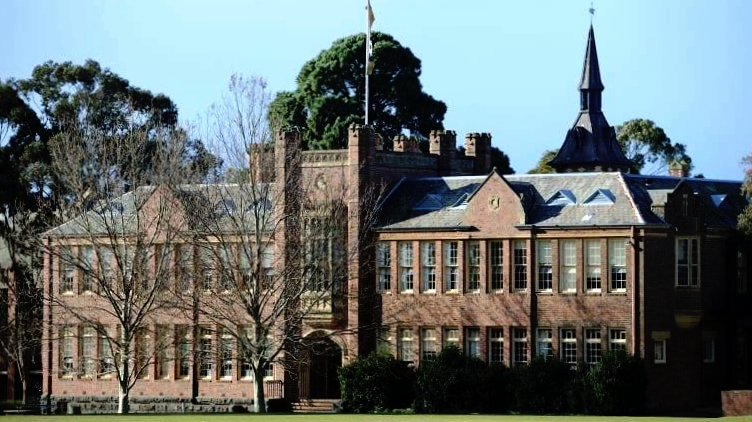
Sara and Polly Smith
Sarah Smith was born in Hull in 1758, the daughter of Joseph Smith. She was baptised in Holy Trinity Church on the 31st August 1758. She also had a sister who was 10 years her junior called Mary, (Polly).
Sarah married mariner, William Robinson in Holy Trinity on 13th September 1785. She was obviously educated, as she signed her marriage certificate.
Matron
Sarah took on the post of Matron and House keeper of Trinity House on Christmas Day, 1794. In addition to providing lighthouses, charts etc, Trinity House were also trustees to a fund for relief & support of all maimed and disabled seamen, their widows, and children.

Remarkably, Sarah stayed in the post for 52 years, until her death on 21st November 1847 aged 90. She was succeeded in the post by her unmarried sister, Polly. She remained in the post for a further 10 years, until her own death in 1867, also aged 90.
Trinity House were obviously very impressed with the service of Sarah and her sister, Polly. “To record their faithful services the Corporation of The Trinity House have caused this stone to be erected.” The headstone still remains.
Sarah was buried in the same year that Hull General Cemetery opened. She was the 137th person to be buried there. A remarkable epitaph to two remarkable women.
Bill Longbone has had a long relationship with the Hull General Cemetery. He is an active member of the FOHGC and manages the work of the volunteers on the site. His biographical sketches of some of the people buried in the cemetery are one of the highpoints of the success of the Facebook site.
